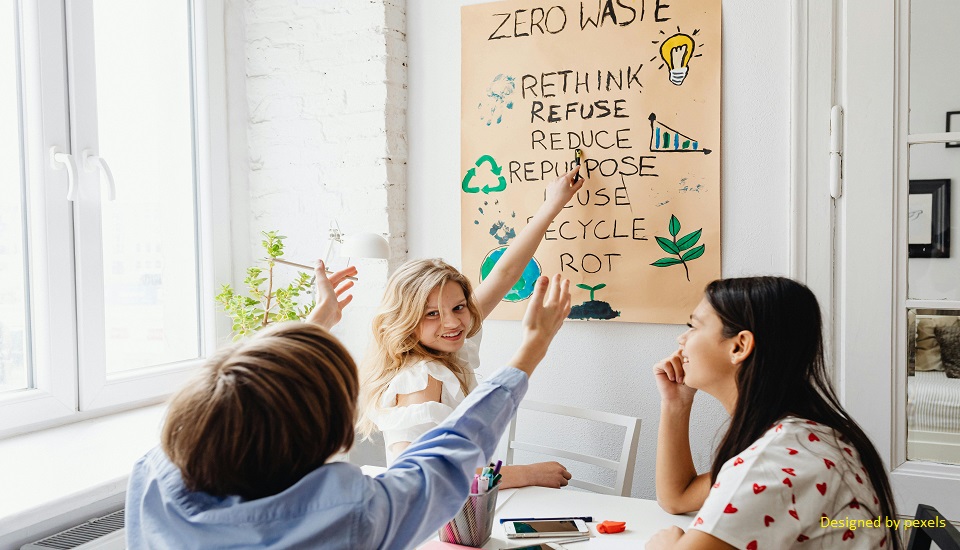In the realm of educational administration and management in Bangalore, embedding sustainability into classrooms isn't simply an adjunct—it's a necessity for future-ready teaching. As environmental pressures escalate globally, the role of teacher-educators is evolving: no longer are they just facilitators of subject knowledge, but architects of a mindset that champions ecological responsibility. "Climate-positive classrooms" are those where every subject—be it mathematics, literature, social studies, or the arts—becomes a vehicle for sustainability. In this blog, we explore how future teachers can embed sustainability into every subject, drawing on insights from how schools are preparing students for a sustainable future.
Why Sustainability Belongs In Every Classroom
Schools today recognise that sustainability education isn’t an optional extra. Schools have an important role in preparing students to understand sustainability concepts, such as resource conservation, renewable energy, and climate change mitigation.
When teacher-administrators in educational management plan curriculum, they must ensure sustainability isn’t siloed within a science class—it must be woven across disciplines. This reflects the interconnected nature of the global challenges we face: climate change, resource depletion, and environmental justice all cut across subject boundaries.
Integrating Sustainability Into The Curriculum
A key strategy is curriculum integration. According to recent analysis, many schools are embedding sustainability topics into the broader curriculum—science, geography, social studies, and beyond—so students learn about ecology, climate change, and human impacts in a holistic manner. For teacher-administrators, this means restructuring lesson plans so that sustainability becomes a theme across subjects.
For instance:
- In mathematics: data analysis of energy consumption, waste statistics, and carbon footprints.
- In literature: texts exploring human-environment relationships, ethical decision-making about nature.
- In social studies: mapping social and economic dimensions of sustainability, the global picture of the UN’s Sustainable Development Goals (SDGs).
By aligning with the SDGs explicitly, schools ground their curriculum in global standards of sustainability and social justice.
Hands-On Learning And Experiential Projects
Embedding sustainability isn't solely about theory; real impact comes when students engage in hands-on learning. As noted teachers who pursue courses like educational administration and management in Bangalore can take initiatives like school gardens, composting programmes, waste-reduction projects, and site visits to renewable-energy installations help bring abstract sustainability concepts alive.
For future teachers, this means designing interdisciplinary projects: a science class experiments with composting; the mathematics class measures the growth and models the output; the language class writes reflective essays on the experience; the arts class documents it through creative media.
Such experiential work strengthens student engagement, builds real-world skills (critical thinking, problem solving, collaboration), and helps embed sustainability as a lived practice rather than an abstract concept.
Embedding Sustainability Mindsets
Beyond knowledge and practice, the goal is to cultivate a sustainability mindset among students. Schools emphasise developing critical thinkers who can analyse environmental issues from multiple perspectives: economic, social, and ecological.
In teacher training and educational administration, this suggests that future teachers need to be equipped to lead debates, guide discussion, pose open-ended problems—rather than just deliver content.
For example:
- In science, what are the trade-offs between renewable and non-renewable energy?
- In social studies: how do local communities adapt to climate change, and what role can students play?
- In the arts: how can creative expression raise awareness about sustainability?
By embedding these thinking skills, students become proactive changemakers, not passive recipients.
Making Sustainability Part Of The School Culture And Infrastructure
An often-overlooked dimension is that sustainability must permeate not only lessons but also the infrastructure and management of the school. For instance, schools are investing in green-building designs, energy-efficient materials, water-saving technologies—all of which serve as living laboratories for students.
From an administration perspective (particularly in settings like Bangalore where urban infrastructure pressures are real), this means aligning facility management, resource planning, and pedagogical goals: classrooms that recycle, water-harvesting systems that students monitor, school canteens that follow zero-waste practices.
When sustainability becomes part of the school’s DNA, it reinforces lessons in every subject and strengthens the message: that sustainability isn’t separate from the real world—it is the real world.
Practical Tips For Future Teachers In Classroom Management
Here are some actionable strategies for teacher-educators and school managers seeking to embed sustainability across subjects:
- Start With A Sustainability Audit
Work with students to map out the school's environmental footprint (energy, water, waste) and use that data in mathematics, science, and social studies.
- Map Curriculum Links
For each subject, identify one to two sustainability-related themes that could be woven into existing units (e.g., a literature lesson on nature, a geography unit on renewable energy).
- Project-Based Interdisciplinary Tasks
Design tasks where students research an issue (e.g., local water scarcity), collect data (mathematics/science), debate solutions (social studies), present creative media (arts/media), and reflect (language).
- Leverage School Infrastructure
Turn the school building and campus into teaching tools—monitor energy, compost waste in the school garden, run a plastic-free canteen pilot.
- Collaborate And Partner
Engage with community organisations, local businesses, or NGOs that focus on sustainability and invite students to real-life exposure—field visits, guest speakers, joint projects.
- Reflect And Iterate
Embed reflection time in every subject—what did we learn about sustainability? How does this relate to our lives and community? Encourage students to carry the learning beyond school.
Bottom Line
In the era of accelerating environmental change, educational institutions have a moral and strategic responsibility to create climate-positive classrooms that shape students into conscious global citizens. This transformation doesn’t happen by chance—it begins with teachers who are equipped with the right mindset, tools, and training. That’s why courses in educational management play a crucial role in preparing educators to integrate sustainability across subjects and school systems.
Written By : Sanjana
